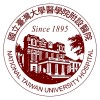
Impact of the Respiratory Isolation on the Quality of Life in Patients Hospitalized for Tuberculosis...
TuberculosisCovid19The respiratory isolation could have a harmful impact on the well-being of patients, especially in a psychological point of view such as anxiety and depression disorders or through the relationship with medical team and/or relatives but also in terms of informations. The evaluation of the impact of respiratory isolation in patients hospitalized for tuberculosis or COVID-19 could allow to identify the different kinds of problems encountered by these patients (physical, psychological, sociological, informations, ...) in order to adapt the environment for efficient care and to improve patient's well-being. The purpose of this research is to evaluate the psychological impact of the respiratory isolation on the quality of life in patients hospitalized for tuberculosis or COVID-19.

Evaluation of CRISPR-based Test for the Rapid Identification of TB in Pulmonary Tuberculosis Suspects...
TuberculosisPulmonaryThis observational Mycobacterium tuberculosis (MTB) diagnostics evaluation study is a prospective study of pulmonary TB suspects who are undergoing sputum or bronchoalveolar lavage fluid (BALF) evaluation for pulmonary TB. The sensitivity and specificity of the CRISPR-based assay will be compared to clinical diagnosis, conventional culture methods and Xpert MTB/RIF assay on same batch specimens.

Comparing Consistency of QuantiFERON-TB Gold Plus and QuantiFERON-TB Gold for Latent Tuberculosis...
Patients on DialysisIn patients receiving long term dialysis, using new generation of QuantiFERON-TB Gold Plus can have less result variability in inter-experiment and serial follow up in comparing with QuantiFERON-TB Gold In-tube.

Evaluating the Diagnostic Validity of Inflammation-associated Markers for Tuberculous Pleurisy
To Investigate Diagnostic Aid of the Inflammation and Apoptosis-associated Markers and Apoptosis Pattern of PE Neutrophil for Tuberculous PleurisyTo investigate the difference of PE inflammation/apoptosis-associated markers between TB pleurisy and non-TB pleurisy To investigate the difference of neutrophil apoptosis in exudative PE between TB pleurisy and non-TB pleurisy To investigate the change of apoptosis pattern of PE neutrophil, before and after TB antigen stimulation, and compare the difference between TB pleurisy and non-TB pleurisy To investigate diagnostic aid of the inflammation/apoptosis-associated markers and apoptosis pattern of PE neutrophil for tuberculous pleurisy

Lipoarabinomannan (LAM) Enzyme-Linked Immunosorbent Assay (ELISA) in Diagnostics of Childhood Tuberculosis...
TuberculosisIn children, it remains quite difficult even in developed countries, to prove a diagnosis of Tuberculosis (TB). New means for diagnosis of this disease are currently being researched. One candidate test is Lipoarabinomannan ELISA from Urine, which has shown good sensitivity of up to 80% in adults. Our study aims to evaluate this test in the diagnosis of children with TB.

Evaluation of an Innovative Tuberculosis Diagnostic Test
TuberculosisHIVDiagnosis of tuberculosis (TB)in young children is a challenge due to atypical non-specific symptoms, difficulty to expectorate mucus, paucibacillary nature of pulmonary TB and low sensitivity of available diagnostic tools. This project aims at evaluating two innovative immunological methods for diagnosing of active TB among HIV-infected and uninfected children.

Immunologic Markers for the Differential Diagnosis Between Uveitis-TBC and Uveitis-SARC (TBC-SARC)...
Uveitis TuberculousUveitis SarcoidToday there are no tests that allow to make a precise differential diagnosis between uveitis from presumed tuberculous origin and uveitis by sarcoidosis. Therefore, with this study, investigators aim to identify, in the aqueous humor and in the blood of participants (patients that suffering from one of these two forms of uveitis) the presence of immunologic markers that distinguish between uveitis of tuberculous etiology and uveitis by sarcoidosis.

Prospective Evaluation of Novel Diagnostics for Tuberculosis in KwaZulu-Natal, South Africa
TuberculosisTuberculosis (TB) infects nearly two billion people and has become the leading infectious cause of mortality worldwide, due in part to inadequate diagnostic and prognostic tests. Older diagnostic tools, such as acid-fast staining, and newer diagnostic tests, such as nucleic acid amplification, are either insensitive, expensive, or not suitable for use at the clinical point-of-care. Therefore, novel diagnostic tests are needed to diagnose active TB disease among adults, people living with HIV (PLHIV), and children in TB-endemic countries. In this project, the investigators will conduct clinical evaluation studies of emerging TB diagnostic tests among (1) hospitalized adults, (2) ambulatory adults in outpatient clinics, and (3) children <12 years suspected of having active TB disease. the investigators will also maintain a biorepository of well-characterized clinical specimens that can be used for either retrospective validation of TB diagnostic tests, establishing a reference LAM test, or to share with partners developing novel TB diagnostics, including new LAM antibodies. The project will be coordinated at the University of Washington, and conducted in partnership with clinical research partners in South Africa, including Umkhuseli Innovation and Research Management (UIRM) and the National Health Laboratory Service (NHLS). The project team is well-equipped to serve as a central clinical research site to evaluate new and emerging point-of-care TB diagnostics, particularly novel urinary LAM assays, at the on-site TB Diagnostics Research Laboratory at Edendale Hospital in KwaZulu-Natal, South Africa.

Clinical Analysis of Safety in Latent Tuberculosis Infection Prophylaxis Treatment
Adverse Reaction to Drug3HPThe treatment of latent TB with 3HP is an important issue for the prevention of active TB. However, significant proportion of subjects receiving 3HP had adverse reaction. The main purpose of this observation study is to identify subjects who have higher risk to develop adverse reaction. Clinical characteristics and biomarker will be used to predict adverse reaction.

Cytometric Immunodiagnostics of Latent Tuberculosis Infection (LTBI)
LTBIBCG Vaccination Reaction1 moreTB-reactive immune cells will be tested in a multiparametric flow cytometry to distinguish an immune response for antigens of Mycobacterium spp. in TB disease/latent infection or a reaction after BCG vaccine.
